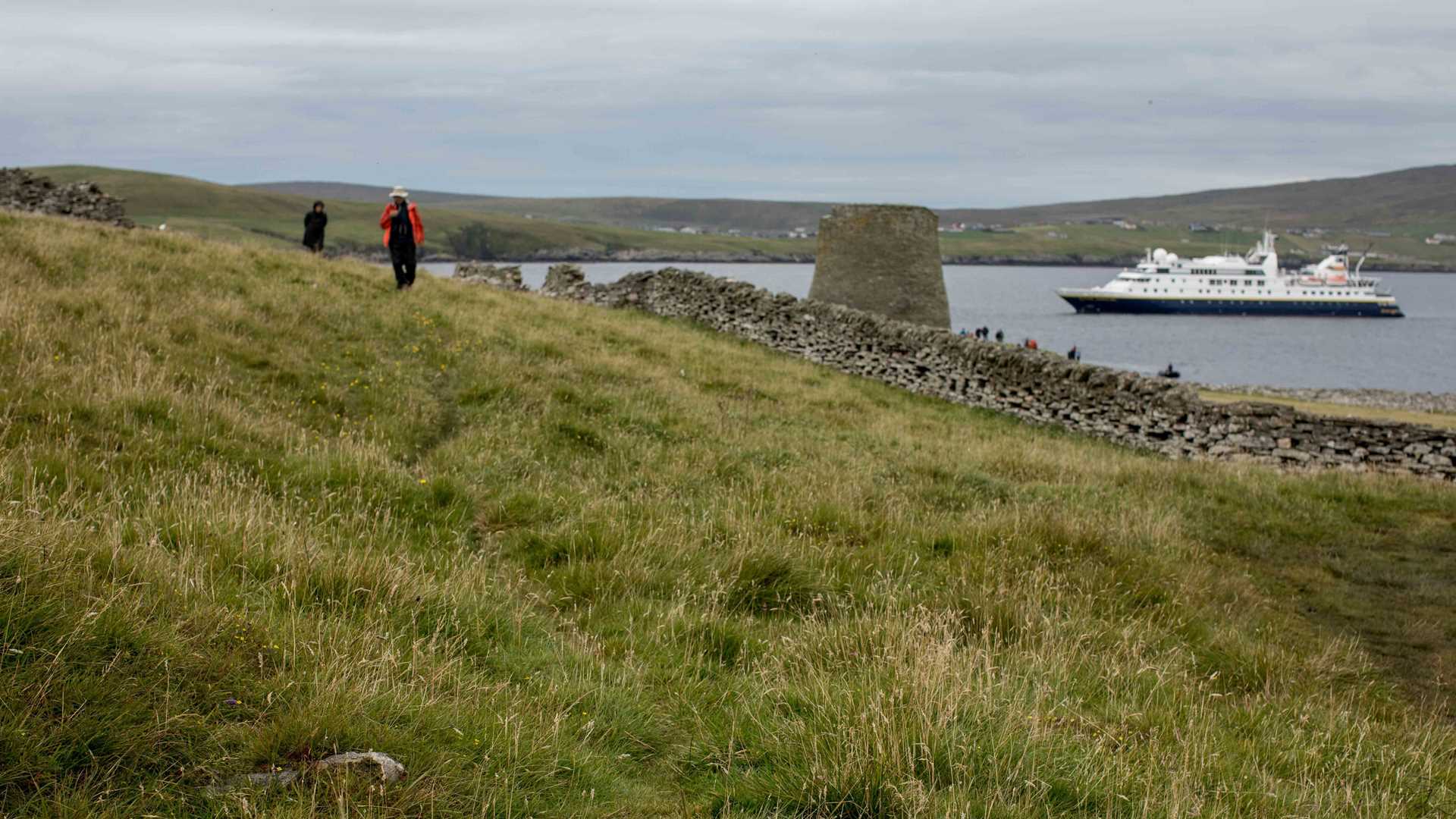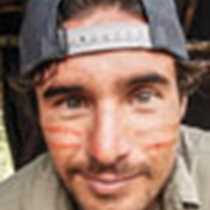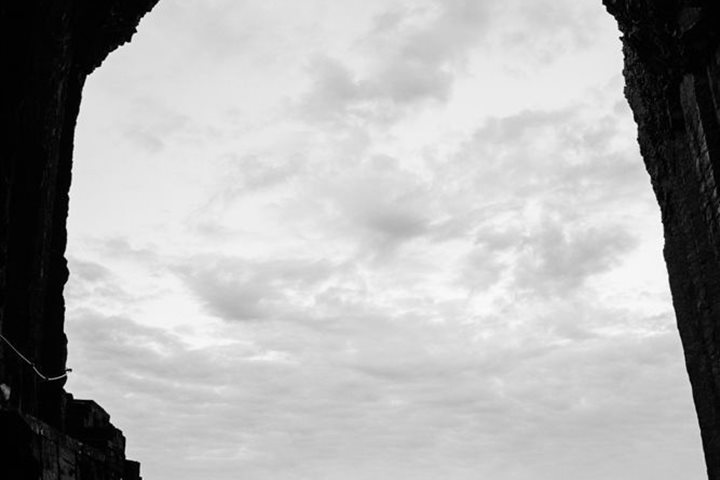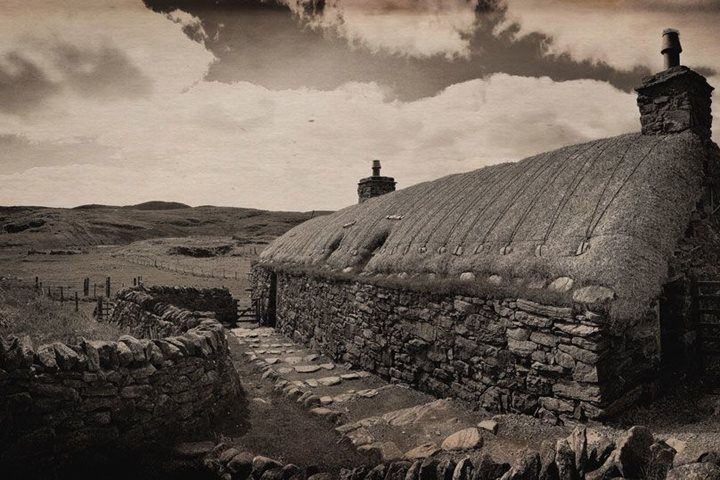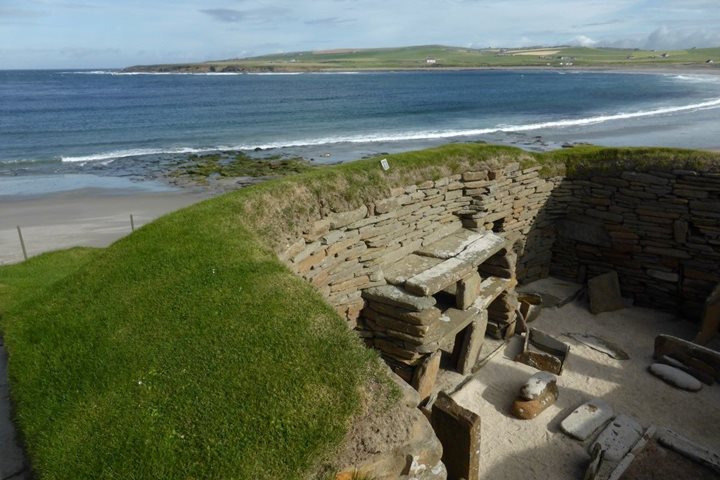Our first day aboard the National Geographic Orion found us exploring multiple islands. The first order of business was to pick up an immigration officer from Lerwick, allowing us to clear into the United Kingdom. The first proper activity was a surprise visit to the tiny island of Mousa, where a well-preserved Iron Age round tower, Mousa Broch, stands tall at the edge of a cliff and within a grassy field. After lunch, we anchored off of the famous Fair Isle which is halfway between Orkney and Shetland and is best known for its substantial bird populations, knitwear, and historic shipwrecks. Fair Isle has around seventy year-round inhabitants, dramatic landscapes, and a very picturesque protected dock. After a delightful welcome aboard dinner hosted by our captain, a few energetic souls headed into Lerwick to enjoy some fiddle music by a local Shetland legend Maurice Henderson.
- Daily Expedition Reports
- 27 Aug 2017
Mousa Broch, Fair Isle and Lerwick, 8/27/2017, National Geographic Orion
- Aboard the National Geographic Orion
- Europe aboard NG Orion
Ryder Redfield, Naturalist/Certified Photo Instructor
Growing up at the base of the Cascade Mountains in the tiny Oregon town of Sisters meant that Ryder was surrounded by wilderness. A childhood of hiking, fishing, hunting for arrowheads, camping, and upland bird hunting resulted in the outdoors feelin...
Read MoreShare Report
Related Reports
8/31/2017
Read
National Geographic Orion
Stornoway, Isle of Lewis
Today, we saw a bunch of old rocks. While that sentence is technically true, you’d be mistaken in thinking that what we did on Stornoway today was in any way boring, stodgy or dry. The rocks we saw today connected us to the past; stone may be mute, but it can communicate a story that is deeper than words. The buses that picked us up on Stornoway pier acted as time machines, taking us progressively further back into human history. Our first stop was about 200 years ago, when most of the residents of Lewis lived in so-called "black houses". The preserved village of Gearrannan contains rustic structures built of rock and covered in thatch. Huddled together by a beautiful bay, they looked like a scene from The Hobbit . Peat smoke still billows from the chimneys of houses that were among the last of their kind to be inhabited. The last residents moved out in the 1960s, and this community was turned into a museum and hostel. Our magic bus continued further back in time, transporting us to the Iron Age, over 2000 years ago. It was around this time that the Dun Carloway broch was built. While the true function of this castle-like structure remain a bit of a mystery, there's no doubt that it made an impression on its neighbors at the time it was built…and it continues to do so to this day, even though much of its stone walls have collapsed. Perched on the edge of a picturesque hillside, it is a ruin with a view. But we still had further to go into the past, and our bus whooshed down Lewis's country roads until we reached a time long before the Pyramids were built. 5000 years ago the Callanish Stones were erected, and they have withstood millennia of wind, rain, lightning and finicky farmers to remain one of the world's most impressive megalithic structures. Yes, they are a bunch of old rocks, yet these inanimate objects resonate with the spirits of the ancient people that dug them from the soil, dragged them across the landscape and mounted them into mysterious patterns. Even though we can't understand their specific purpose, meaning or symbolism, one can't help but be moved by their power. Like the silent stones that form the walls of Dun Carloway broch and the black houses of Gearrannan, these rocks speak volumes.
8/30/2017
Read
National Geographic Orion
Orkney
A morning of sunshine and showers saw us driving westwards from Kirkwall through the green pasture land and barley fields of the Mainland of Orkney, heading for the prehistoric World Heritage Site for which these islands are famous. On the bleak open moorland on a narrow isthmus between two lochs stands the Ring of Brodgar, a henge of huge standing stones surrounded by a deep ditch. This is one of a complex of structures in this area predating Stonehenge and where new excavations are re-writing our understanding of the development of stone circle culture and putting Orkney at the centre of Neolithic Britain. We continued on to the Bay of Skail and the Stone Age village of Skara Brae. Discovered emerging from the coastal sand dunes is a community of circular and interlinked stone-built dwellings, complete with Flintstones-esque furniture of beds, hearths, and dressers with which, in their ordinariness and familiarity, we could empathize. Our return route took us past the 120 square mile natural harbour of Scapa Flow with views across to the village of Stromness, birthplace of Arctic explorer John Rae, discoverer of the fabled Northwest Passage. The British naval fleet was based here during two world wars and Scapa Flow is famous (and infamous) for the scuttling of 74 captured ships of the German High Fleet in 1919, following the end of the First World War and for the sinking of the battleship HMS Royal Oak, torpedoed by a German U-boat in October 1939, early in the Second World War, with the loss of 834 men and boys. Returning to the ship for lunch, we later ventured out on a range of excursions which took us birdwatching, where we saw hen harriers, or hiking on the easternmost coast of Mainland at Mull Head, or exploring the Southern Isles of the Orkney Archipelago, where we visited the remarkable Italian Chapel built by prisoners-of-war in a military Nissan hut. As we cast off from the pier at Kirkwall, the haunting melodies of a lone piper bade us farewell to these far-flung islands off the north coast of Scotland.

